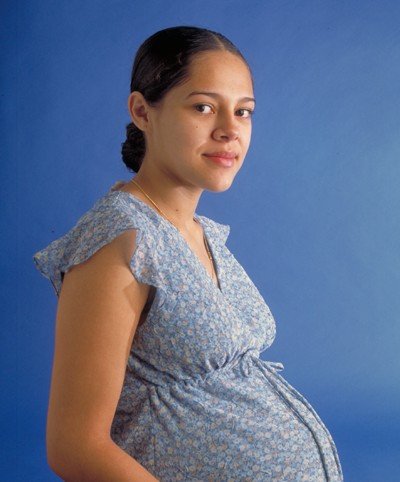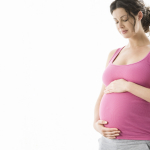Anxiety symptoms are relatively common during pregnancy but typically undiagnosed and undertreated. A recent study of 2793 women observed that 9.5% of women meet criteria for generalized anxiety disorder (GAD) at some point during their pregnancy. The highest rates of GAD were observed in the first trimester (7%). Only 2% of women met criteria for GAD in the second trimester, and 3% in the third trimester.
This study indicated that a history of GAD prior to pregnancy was the strongest predictor of GAD during pregnancy; women with 4 or more episodes of GAD were about 7 times more likely to experience GAD during pregnancy than women with no history of GAD. Given the limited information on the reproductive safety of certain medications, it is common for women with histories of anxiety disorder to discontinue anti-anxiety medications during pregnancy. However, many women experience recurrence of their anxiety symptoms during pregnancy, and it seems that the first trimester may be particularly difficult.
Anxiety during pregnancy is not necessarily a benign event. Various studies indicate that women who experience clinically significant anxiety symptoms during pregnancy are more likely to have preterm labor and low birth weight infants, as well as other complications, including pre-eclampsia. Thus it is crucial that women with anxiety disorders be monitored carefully during pregnancy, such that appropriate treatment may be administered should anxiety symptoms emerge during pregnancy.
Treatment Options
Cognitive-behavioral therapy and relaxation techniques may be very useful for treating anxiety symptoms during pregnancy and may reduce the need for medication. Various studies have demonstrated the effectiveness of yoga, massage therapy, and acupuncture in this setting. While these modalities have been shown to reduce anxiety symptoms, we have less information on the effectiveness of these interventions in women with pre-existing anxiety disorders.
Some women may not be able to remain symptom-free during pregnancy without medication and may instead elect to continue treatment with anti-anxiety medications. When choosing a medication for use during pregnancy, it is important to choose an effective treatment with a good safety profile.
We have the most information on the reproductive safety of selective serotonin reuptake inhibitors (SSRIs), including Prozac (fluoxetine) and Celexa (citalopram), and the tricyclic antidepressants. These medications are effective for the treatment of anxiety disorders, and research indicates that there is no increase in risk of major congenital malformation in infants exposed to these medications in utero. Nor is there any consistent evidence that these medications are associated with any serious complications during pregnancy.
Data regarding the use of benzodiazepines (such as Klonopin, Valium, and Ativan) during pregnancy is somewhat controversial. Early reports suggested that there may be an increased risk of cleft lip and palate associated with first trimester exposure to these medications, estimating the risk to be about 0.7%; however, more recent studies have shown no evidence for an increase in risk of malformations in children exposed to benzodiazepines. Symptoms of toxicity have been reported in newborns, and these include sedation, decreased muscle tone (floppiness), and breathing problems. In general, these symptoms appear infrequently but probably occur more commonly in women taking higher dosages of medication. There are also some reports of benzodiazepine withdrawal occurring in newborns exposed to benzodiazepines in utero, including irritability, sleep disruption, and, less commonly, seizure.
We have no data on the reproductive safety of buspirone (BuSpar); typically, we do not use this medication during pregnancy.
Ruta M. Nonacs, MD PhD








Since animal studies of Buspar in pregnant lab animals has shown no real risk to mother or fetus, why hasn’t this med been studied in pregnant women?